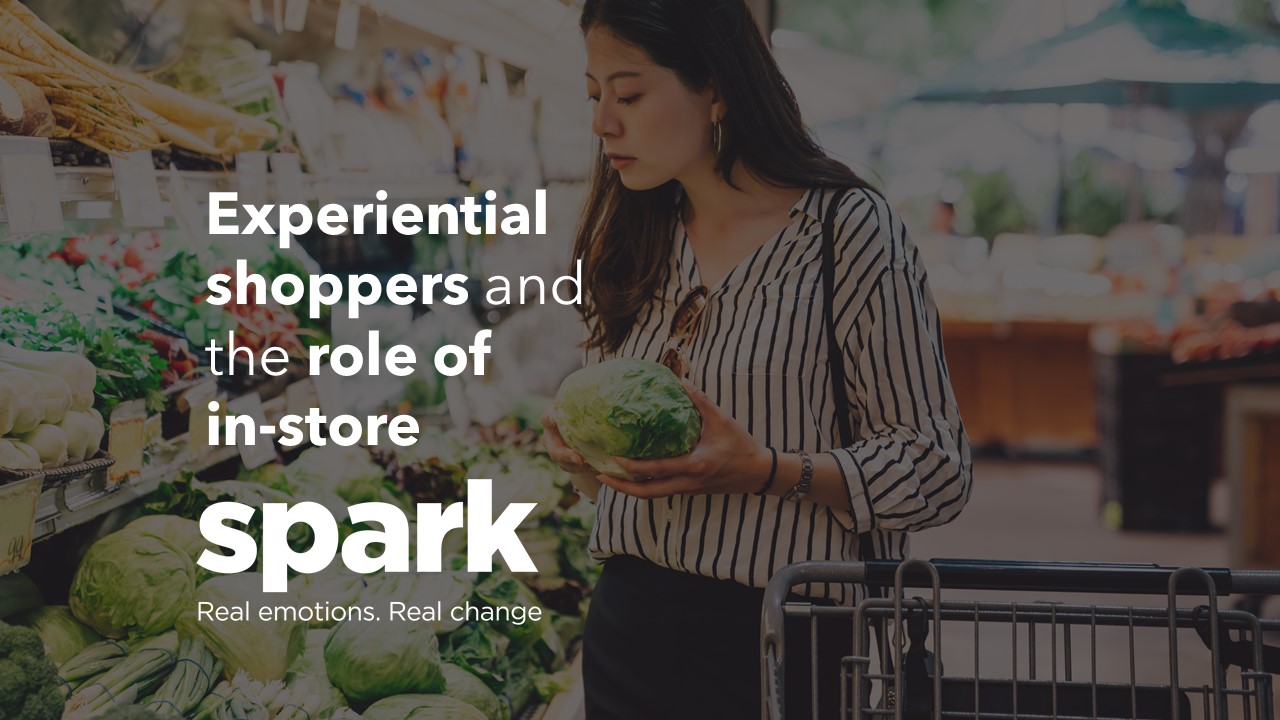The standard measure of whether your product is doing well is whether it sells or not. But human behaviour isn’t as cut and shut as that. In this article, we talk about how experiential shoppers behave in-store and how we are able to truly understand their behaviour.
What really happens at the shelf is an interplay of hundreds of decisions, no matter how mundane or regular the purchase is. It’s driven by everything from how the product is arranged, to what they had for breakfast. Ask a shopper what they did, and they’ll tell you “I just buy what I always do, I don’t take time, I’m in and out”. But their behaviour at the moment of purchase tells a different story.
From our research, every individual visit to a product, category, or aisle produces a behavioural footprint that can tell us who the shopper is, how engaged they are, and their propensity to purchase. All outside of what they could tell us.
The first thing to understand is that shopping is rarely a conscious process. We do not go through a carefully mapped out procedure of weighing up the options of one factor vs another. We are often operating on what’s called our “System 1” type of decision-making, in many ways our unconscious “autopilot”. Thinking takes effort, and we don’t like effort. When we do have to consciously shop (using System 2), maybe for something new or something expensive, it’s easy for us to give up, and default to what we know, or what’s easiest to find. Therefore, being easy to process is vital to reducing effort, and increasing the likelihood of purchase.
This means that what we tell people about our behaviour is less important that what we actually do. We simply don’t know most of the time (and often don’t want to make out we didn’t know what we were doing!) so we’ll rationalise our responses. Actions really do speak louder than words…
Segmenting shopper’s behaviour is therefore vital to understanding how your category or product is shopped, and there what you can do to create growth. At Spark Emotions, we carry out observations we look for two broad groups of behaviour: Fast and Slow.

Fast Behaviour:
Fast behaviour indicates that shoppers are operating firmly on their System 1. This may be driven by top-down (e.g. highly planned purchase), or bottom-up (e.g. an easy to shop fixture) elements, but ultimately, the shopper found what they needed quickly and easily. These shoppers find their destination quickly, and will purchase in almost every occurrence. This is the goal for any brand; be easy to find, and easy to purchase, so that switching out of your brand doesn’t occur.
Slow behaviour:
More considered behaviour shows that shoppers may have drifted more into their system two. They’ve been pulled out of their autopilot and forced to think about their purchase. Maybe the product is hard to find, or maybe the choice is overwhelming, or perhaps they just don’t know what they want.
As part of this slow behaviour, we can further break those shoppers down into three subgroups: Confused shoppers, Considering shoppers, and Experiential shopper. Confused shoppers need help, as they explore multiple subcategories, categories, and even aisles trying to find what they want. Considered shoppers want to take the time to choose (but will probably purchase). Experiential shoppers are the people who want to smell, touch, try-on and taste their product before they buy. From our research, we see that buyers are much more likely to touch and read packs than non-buyers.
By understanding the split of fast and slow behaviour in store, you can start to build a picture of where you need to make changes to your offering, and how to help your shopper find what they need.

Buying conversion
By observing behaviour, you can ultimately see all shoppers are considering your product or category. These represent your opportunity to grow, as more than 25% of shoppers who shop a category leave without purchase (on average). Every 1% converted in store is worth millions across a year in the retailer. You may know how many people buy, but you probably don’t know how many could’ve bought. At Spark Emotions, we are firm believers that it’s often better to understand the non-buyer if you’re looking to grow your brand or category.
Some research will claim that they can understand behaviour without ever seeing a shopper via interviews, surveys, and polls, but if you want to understand real behaviour, its key to research your shopper in the context of their shopping environment.
By coupling observational behaviour methods with interviews in-store, you can build a powerful set of insights that as accurately as possible uncover the shopper journey from the beginning to end, and the key drivers and barriers in between. Our Xtraview methodologies target shoppers just after they have completed their shop, ensuring we capture shoppers as close to being in the ‘shopper mindset’ as possible.
All of this highlights the importance of researching the in-store environment and the real behaviour that real shoppers exhibit within.
At Spark Emotions, we tailor our research methods to ensure you are getting the most accurate answers to your questions. whether that is how to engage experiential shoppers or what message to put where in a store.
To find out how we can help you gain a better understanding of your shoppers, please get in touch by clicking here

Written by Will Morgan, Associate Director at Spark Emotions
If you have any questions, feel free to reach out to Will via email will.morgan@sparkemotions.com or connect with him on LinkedIn





